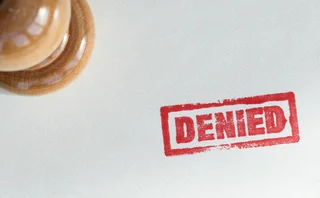LEI and the Profit Motive
LEI and the Profit Motive

As the newly installed editor of Inside Reference Data, I’d like to start by picking up where my predecessor Tine Thoresen left off last month. We expect to keep hearing a lot about legal entity identification (LEI), with the US Office of Financial Research (OFR) preparing to put an LEI standard in place on July 15.
Last month, at its Financial Services Technology Leaders Forum, the Securities Industry and Financial Markets Association (Sifma) picked up the mantle that had been set up by other industry leaders concerning LEIs, as an opportunity to make changes for the better in the functioning of the industry. The greatest advantage the new LEI standard could yield, according to executives who spoke at the Sifma forum, is improvement in firms’ risk management (page 16).
Yet, even with a looming deadline, there still seems to be swirling uncertainty around how the new standards will be put in place, confronting the industry with questions about where to store data, how to get a full end-to-end, front- to back-office view of data, and how to evaluate data quality.
One might be well-advised to take a look back nearly 10 years ago, when securities industry technologists were debating about how to handle straight-through processing, a trading initiative that, while not regulation-driven, did spawn two organizations to serve the function, the not-for-profit GSTPA, and the for-profit corporation Omgeo, which began as a joint venture of Thomson Reuters (its pre-merger Thomson half) and DTCC. Omgeo thrived, while the now-defunct GSTPA is little remembered by those with less than five years’ involvement in the industry.
This history holds a lesson for how to serve the industry’s demands for setting and working with LEIs. That lesson is that it could be time to consider setting up a for-profit, or at least “non-non profit” as some put it, company to handle LEIs. Although the changes to LEIs appear to be driven by the US, AFME (the Association for Financial Markets in Europe) and ASIFMA (the Asia Securities Industry and Financial Markets Association) have joined Sifma in forming the Global Financial Services Trade Associations, which is expected to recommend providers to issue LEIs right around the time this issue goes to press. Will the trade associations point to providers that already exist? Will those providers be ones that are already profitable? Will there be any surprises in what the associations recommend?
The answers to these questions will affect how the new LEIs are implemented and how requirements and mandates are met. The process is expected to last from a year and a half to two years, beyond the July 15 date, as different regions and countries complete their rulemaking. Undoubtedly, the effectiveness of the new LEI standard at improving risk management will depend on who carries it out.
Only users who have a paid subscription or are part of a corporate subscription are able to print or copy content.
To access these options, along with all other subscription benefits, please contact info@waterstechnology.com or view our subscription options here: http://subscriptions.waterstechnology.com/subscribe
You are currently unable to print this content. Please contact info@waterstechnology.com to find out more.
You are currently unable to copy this content. Please contact info@waterstechnology.com to find out more.
Copyright Infopro Digital Limited. All rights reserved.
As outlined in our terms and conditions, https://www.infopro-digital.com/terms-and-conditions/subscriptions/ (point 2.4), printing is limited to a single copy.
If you would like to purchase additional rights please email info@waterstechnology.com
Copyright Infopro Digital Limited. All rights reserved.
You may share this content using our article tools. As outlined in our terms and conditions, https://www.infopro-digital.com/terms-and-conditions/subscriptions/ (clause 2.4), an Authorised User may only make one copy of the materials for their own personal use. You must also comply with the restrictions in clause 2.5.
If you would like to purchase additional rights please email info@waterstechnology.com
More on Regulation
Experts say HKEX’s plan for T+1 in 2025 is ‘sensible’
The exchange will continue providing core post-trade processing through CCASS but will engage with market participants on the service’s future as HKEX rolls out new OCP features.
No, no, no, and no: Overnight trading fails in SIP votes
The CTA and UTP operating committees voted yesterday on proposals from US exchanges to expand their trading hours and could not reach unanimous consensus.
Big xyt exploring bid to provide EU equities CT
So far, only one group, a consortium of the major European exchanges, has formally kept its hat in the ring to provide Europe’s consolidated tape for equities.
Jump Trading CIO: 24/7 trading ‘inevitable’
Execs from Jump, JP Morgan, Goldman Sachs, and the DTCC say round-the-clock trading—whether five or seven days a week—is the future, but tech and data hurdles still exist.
Pisces season: Platform providers feed UK plan for private stock market
Several companies in the US and the UK are considering participating in a UK program to build a private stock market composed of separate trading platforms.
How to navigate regional nuances that complicate T+1 in Europe
European and UK firms face unique challenges in moving to T+1 settlement, writes Broadridge’s Carl Bennett, and they will need to follow a series of steps to ensure successful adoption by 2027.
Nasdaq leads push to reform options regulatory fee
A proposed rule change would pare costs for traders, raise them for banks, and defund smaller venues.
The CAT declawed as Citadel’s case reaches end game
The SEC reduced the CAT’s capacity to collect information on investors, in a move that will have knock-on effects for its ongoing funding model case with Citadel.








